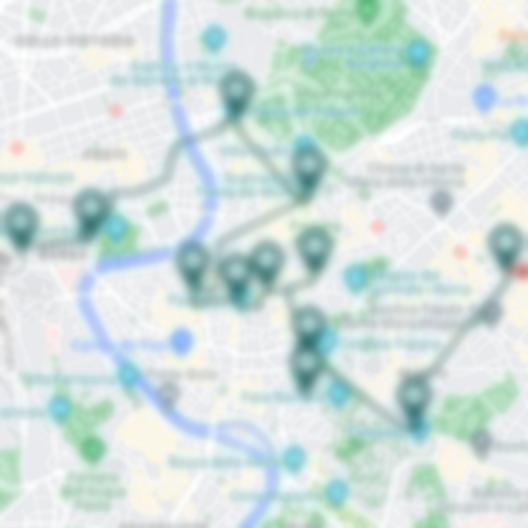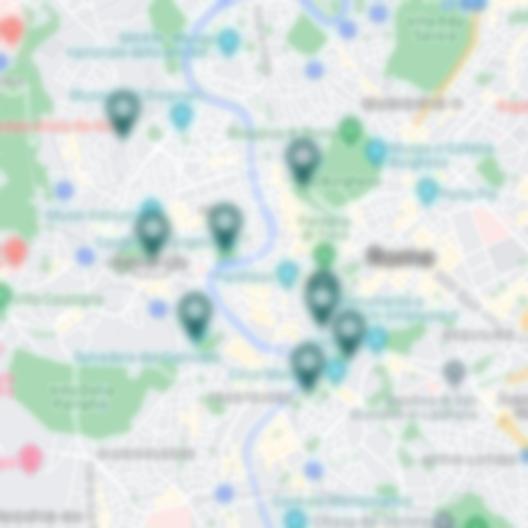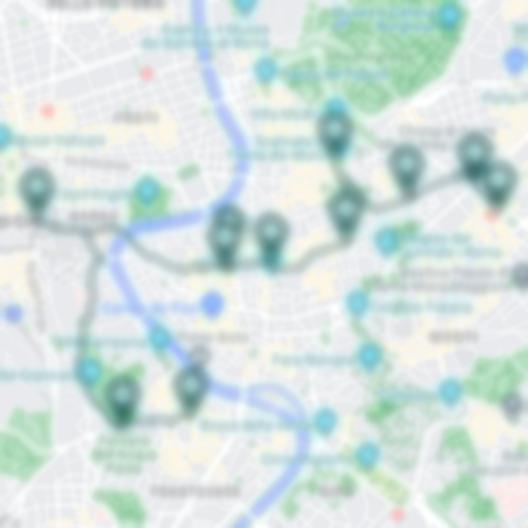Anyone who’s been to Italy knows that coffee there is more than just a beverage – it’s an integral part of the culture and lifestyle. With dozens of variations, unwritten rules, and an entirely different lingo, ordering a coffee can be quite an exciting cultural experience.
In a country that enforces rules for everything from how to eat your pasta (never with a spoon) to when it’s appropriate to wear flip flops (only at the beach), it should come as no surprise that coffee is no different.
Whether you’re winding through the cobblestone streets of Rome after a long day of exploring the sights highlighted in the fabulous walking maps of Rome or simply starting your day with a flavorful buzz, indulging in the country’s coffee culture is a must. Much more than a simple pick-me-up, coffee in Italy is savored, adored, and intricately tied to the rhythm of the day. Navigate through the rest of this article to unlock the secrets of the Italian coffee world, and discover just how intertwined this beloved beverage is with the country’s lifestyle and customs.
Why Is Coffee So Important To Italian Culture?
When it comes to Italian culture, coffee is not simply about a caffeine jolt. Coffee shops, known as ‘caffè’ in Italy, are central to social life. It’s where you start your day, catch up with friends, unwind after a long day or even conduct business meetings.
Why is coffee important to Italian culture, you ask? Coffee is a symbol of hospitality—it is often the first thing offered when you visit someone’s home. Coffee breaks also punctuate the daily routine, providing an opportunity for rest and social connection.
The Different Types Of Italian Coffee Drinks
Italy is a country that makes a staggering amount of coffee, but it’s not just the quantity that’s impressive—it’s the diversity. From the quick and potent shot of espresso to the frothy, indulgent cappuccino, the Italian coffee scene boasts a plethora of options.
1. Caffè or Espresso: This is the foundation of all Italian coffee drinks. It’s a concentrated form of coffee made by forcing pressurized hot water through finely-ground coffee beans. The result? A thick, strong shot of coffee served in a small cup. It’s like a jolt of caffeine to start your day right.
2. Cappuccino: This is probably the most popular coffee drink after espresso. A cappuccino is an espresso-based drink, topped with equal parts of steamed milk and foam. The trick is in the careful proportion of coffee, milk, and foam. Remember, it’s a breakfast drink in Italy, not to be consumed after 11 am.
3. Caffè Macchiato: The term ‘macchiato’ means marked or spotted. This is essentially an espresso ‘marked’ with a dollop of frothy milk on top. It is for those who find espresso too strong but cappuccino too weak.
4. Latte Macchiato: Unlike a caffè macchiato, a latte macchiato is a glass of warm milk with just a spot of coffee.
5. Caffè Latte: Not to be confused with latte macchiato, a caffè latte is somewhat similar to a cappuccino, but contains more milk and less foam. The ratio is typically one-third espresso, two-thirds heated milk, with just a little foam.
6. Caffè Mocha/Mocaccino: It’s for the chocolate lovers. A caffe mocha is a perfect blend of espresso, steamed milk, and chocolate.
7. Caffè Corretto: For those who like a bit of a kick in their coffee, a caffè corretto is an espresso ‘corrected’ with a splash of liquor, usually grappa, sambuca, or brandy.
8. Marocchino: Named after its color, reminiscent of the Moroccan leather, this is basically a caffè macchiato with a sprinkling of cacao, served in a small glass. The history of Marocchino is interestingly tied to Italian colonialism in Africa.
9. Caffè Lungo and Ristretto: Done by manipulating the brewing process, a caffè lungo (long coffee) is a ‘stretched’ espresso where more water is allowed to pass through the coffee grounds. Meanwhile, a ristretto (restricted coffee) is the opposite, where less water is used to make a smaller, more concentrated shot.
10. Caffè d’Orzo: This one’s for those who love the taste of coffee but not its effects. Orzo coffee is a caffeine-free coffee made from toasted barley. It can be served as an espresso, cappuccino, or latte.
Each coffee type has its unique qualities and taste profiles, suited for different times of the day and appealing to assorted coffee palettes. So, when in Italy, don’t just stop at cappuccino. Explore, taste, and enjoy the broad range of Italian coffee drinks!
How To Order Coffee In Italy
Ordering coffee in Italy can seem like a daunting task. One cardinal rule – order at the bar counter! You’ll see Italians crowding around it in the morning. Also, don’t order a “latte” if you want a coffee with milk. In Italy, latte means milk, so if you order just a latte, you’ll end up with a glass of milk!
Also, keep in mind the unwritten Italian rule about not drinking milky coffees after 11 am. Cappuccinos and lattes are breakfast drinks. Ordering one post-lunch might earn you some odd looks.
Useful Phrases To Order A Coffee In Italy
Brush up your language skills with these useful phrases when ordering your coffee in Italy:
1. Un caffè, per favore – A coffee, please.
2. Un cappuccino, per favore – A cappuccino, please.
3. Un caffè macchiato, per favore – A coffee macchiato, please.
4. Un caffè lungo, per favore – A long coffee, please.
5. Un caffè Americano, per favore – An American coffee, please.
How To Pay For Coffee In Italy
Generally, when ordering at a cafe you’ll likely pay first, get a receipt, then order at the counter. In some cafes, especially in larger cities, you might order first and pay later.
Order Coffee In Italy: Insider Tips
Once you have the lingo down, it’s not too hard to navigate the Italian coffee culture. However, there’s a few other quirks to be mindful of.
Quality Over Quantity
In Italy, coffee is all about the quality, not quantity. This is why you’ll typically find Italian coffee cups to be smaller. A potent espresso shot served in a tiny cup is the norm. Large to-go cups are a rarity and carrying around a coffee while walking or driving isn’t quite the Italian way.
No Milk After 11 AM
Cappuccinos and other milky coffees are considered breakfast drinks in Italy. Italians enjoy them in the morning, often with a croissant or another sweet pastry. One of the cardinal rules of coffee-drinking in Italy is not to order a cappuccino after 11 am. While you likely won’t be refused service for placing a late cappuccino order, it may elicit a few raised eyebrows. Typically, Italians consume milky coffees like cappuccinos in the morning, and espressos in the afternoon.
Standing At The Counter
Italian cafes typically have two sections – the table seating and the bar counter. If you see Italians standing at the counter, sipping their espresso quickly, don’t be surprised. Standing at the counter, engaging in quick banter with the barista or fellow customers, and then rushing off to their work or errands is commonplace. This practice actually plays into another tradition: the price of your coffee will often be lower if you drink it standing at the counter rather than seated at a table.
Water Served With Coffee
When you order a coffee at a bar or cafe in Italy, you’ll often receive a small glass of water with your beverage. This is to cleanse your palate before and after your coffee, allowing you to fully experience the flavor.
All in all, the Italian coffee culture is not just about ordering and having a drink. It’s a cultural ritual that tells a lot about the lifestyle and values of Italians—simple, meaningful, and always centered around human connection. So when you’re in Italy, do what the Romans do. Take a break, step into a coffee shop, and immerse yourself in the vibrant Italian coffee culture.


